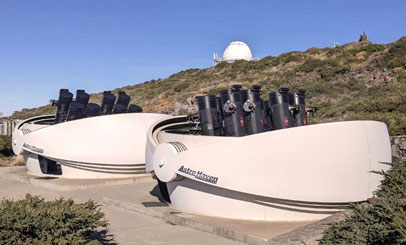GOTO

The Gravitational wave Optical Transient Observer is a facility to monitor the night sky from two observatories: La Palma (Spain) and Siding Spring (Australia).
GOTO is a collaboration between ten institutes in the UK, Australia, Thailand, Finland and Spain. The University of Leicester is one of the founding members of the collaboration.
The advent of the multi-messenger era requires a new approach to optical, transient astronomy. Searches for electromagnetic counterparts to gravitational wave (GW) events require near real-time coverage of large sky areas, covering tens to thousands of square degrees. To reliably identify counterparts over such areas, a near real-time dynamic sky map is required to rapidly identify likely counterparts (or identify transients not associated with the GW source).
GOTO solves these problems by using multiple telescopes (16x40cm/f2.4 at each site) to provide a large instantaneous field of view (~100 square degrees per site).
GOTO images the night sky continuously to provide a dynamic optical sky survey, but it can also be “triggered” to observe transients as they happen. An automated data processing system quickly identifies likely transients and ingests alerts from other facilities.
There are many topics, particularly in the areas of time-domain and multi-messenger astrophysics, which can be addressed using GOTO, and complement our involvement in other facilities, such as Swift, SVOM, Einstein Probe and CTA.
More details can be found on the GOTO observatory website.